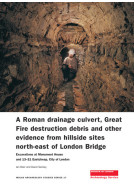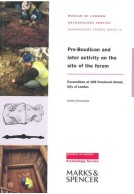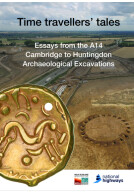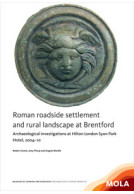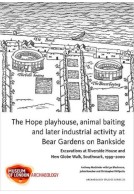Google Books previews are unavailable because you have chosen to turn off third party cookies for enhanced content. Visit our cookies page to review your cookie settings.
Excavations at 25 Cannon Street, City of London (Paperback)
From the Middle Bronze Age to the Great Fire
Imprint: MOLA (Museum of London Archaeology)
Series: MoLAS Archaeology Studies Series
Pages: 73
Illustrations: 51 b/w illus
ISBN: 9781901992229
Published: 1st December 2001
Script Academic & Professional
Series: MoLAS Archaeology Studies Series
Pages: 73
Illustrations: 51 b/w illus
ISBN: 9781901992229
Published: 1st December 2001
Script Academic & Professional
You'll be £3.95 closer to your next £10.00 credit when you purchase Excavations at 25 Cannon Street, City of London. What's this?
+£4.99 UK Delivery or free UK delivery if order is over £40
(click here for international delivery rates)
Order within the next 3 hours, 30 minutes to get your order processed the next working day!
Need a currency converter? Check XE.com for live rates
(click here for international delivery rates)
Order within the next 3 hours, 30 minutes to get your order processed the next working day!
Need a currency converter? Check XE.com for live rates
This report provides a chronological account of excavation findings at 25 Cannon Street, supported by many illustrations and specialist contributions. The dig revealed a long sequence of occupation, and adds to findings made on the site in 1954. Redeposited pottery provided rare evidence for Middle Bronze Age activity in the area of the City of London. Early Roman quarrying and timber buildings were followed by increased development from c. AD 70. By the late 2nd century the area included masonry buildings, some possessing tessellated floors. Building alignments indicate the route of a Roman road immediately to the north of the site, beneath Watling Street. One Roman building was occupied until the late 4th century, its ruins covered by 'dark earth'. Four cellared buildings had been constructed on the site by the mid 11th century, and pre-dated Friday Street and the Church of St Werburga, later St John the Evangelist. The church was founded between 1098 and 1108, and was rebuilt with a wider chancel in the 13th or 14th century. Medieval and later buildings, cellars and cesspits were associated with occupation up to the Great Fire.
Other titles in the series...
Other titles in MOLA (Museum of London Archaeology)...











